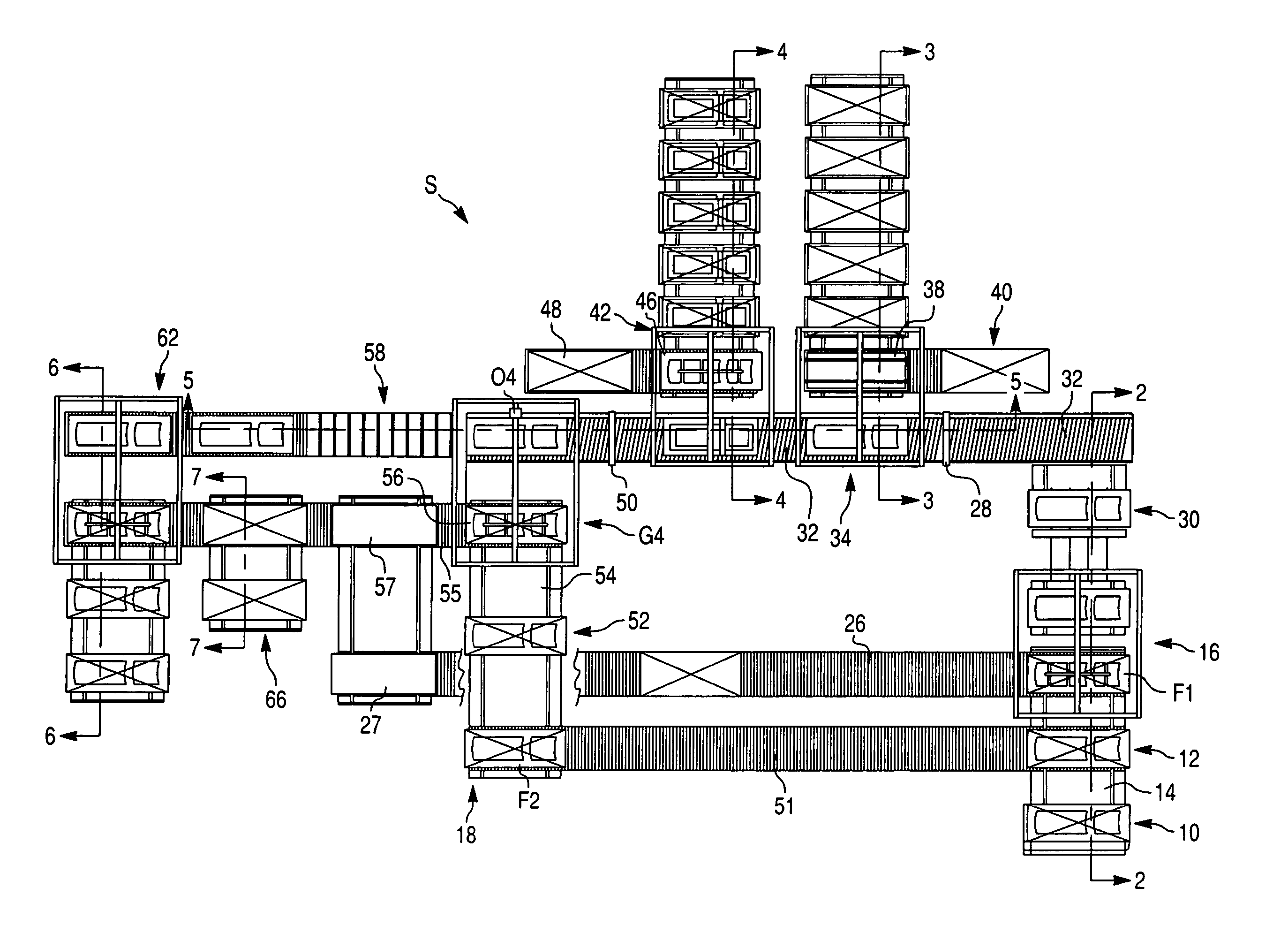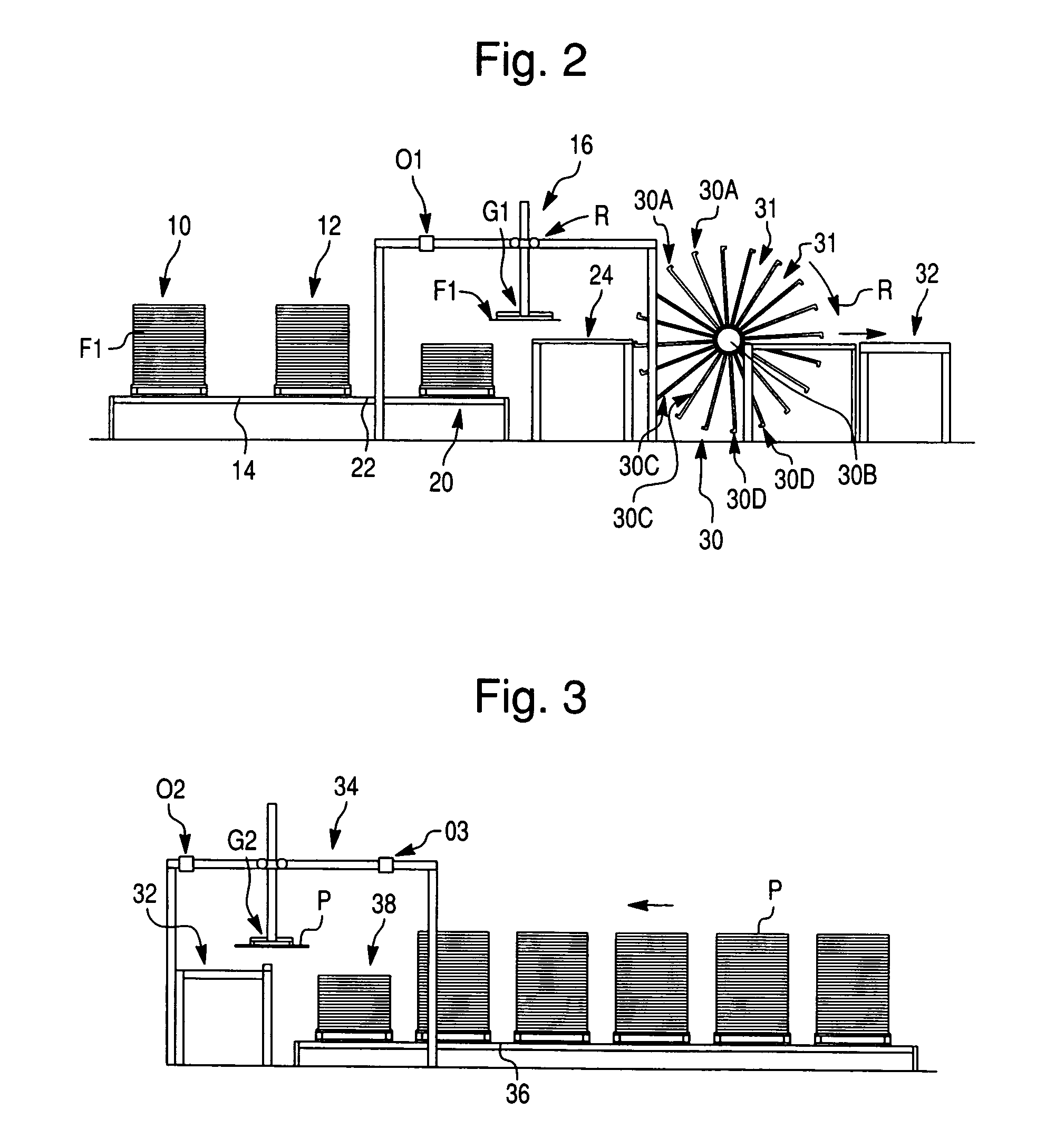Automated door assembly system and method
a door and door assembly technology, applied in the field of door making methods, can solve the problems of high labor intensity, high cost, and subject to quality variations, and achieve the effects of improving quality, improving production efficiency, and improving production efficiency
- Summary
- Abstract
- Description
- Claims
- Application Information
AI Technical Summary
Benefits of technology
Problems solved by technology
Method used
Image
Examples
Embodiment Construction
[0017] A preferred facility layout of a system S for making doors according to the present invention is best shown in FIG. 1. System S includes a loading station 10 for receiving door facings. Pallet loads of door facings may be transported to loading station 10 by fork truck. For example, each pallet load may include 200 door facings. From loading station 10, pallets may be transported to a distribution station 12 via a loading conveyor 14.
[0018] From distribution station 12, pallets are transported to either a first station 16 for processing a first door facing F1 of a door being manufactured, or a second station 18 for processing a second door facing F2 on the opposing side of the door. Preferably, the first three pallets of door facings received at distribution station 12 are directed to first station 16. The next three pallets of door facings received at distribution station 12 are directed to second station 18. Door facings F1, F2 may be made from a wood fiber composite, hard...
PUM
| Property | Measurement | Unit |
|---|---|---|
| time | aaaaa | aaaaa |
| time | aaaaa | aaaaa |
| stack down time | aaaaa | aaaaa |
Abstract
Description
Claims
Application Information
 Login to view more
Login to view more - R&D Engineer
- R&D Manager
- IP Professional
- Industry Leading Data Capabilities
- Powerful AI technology
- Patent DNA Extraction
Browse by: Latest US Patents, China's latest patents, Technical Efficacy Thesaurus, Application Domain, Technology Topic.
© 2024 PatSnap. All rights reserved.Legal|Privacy policy|Modern Slavery Act Transparency Statement|Sitemap



